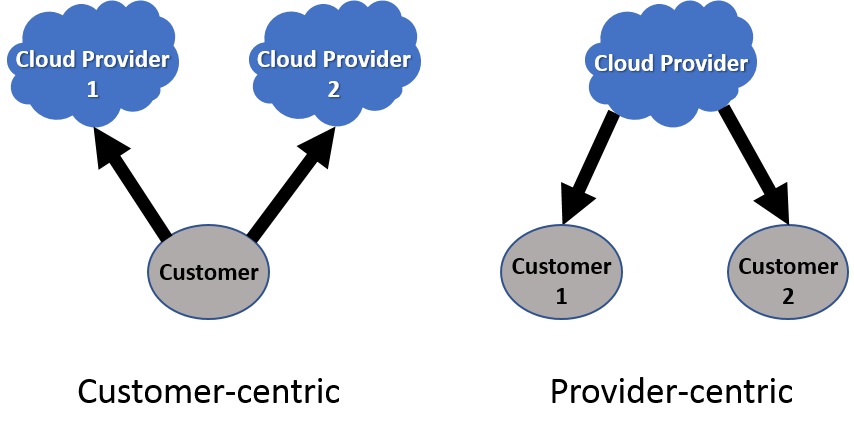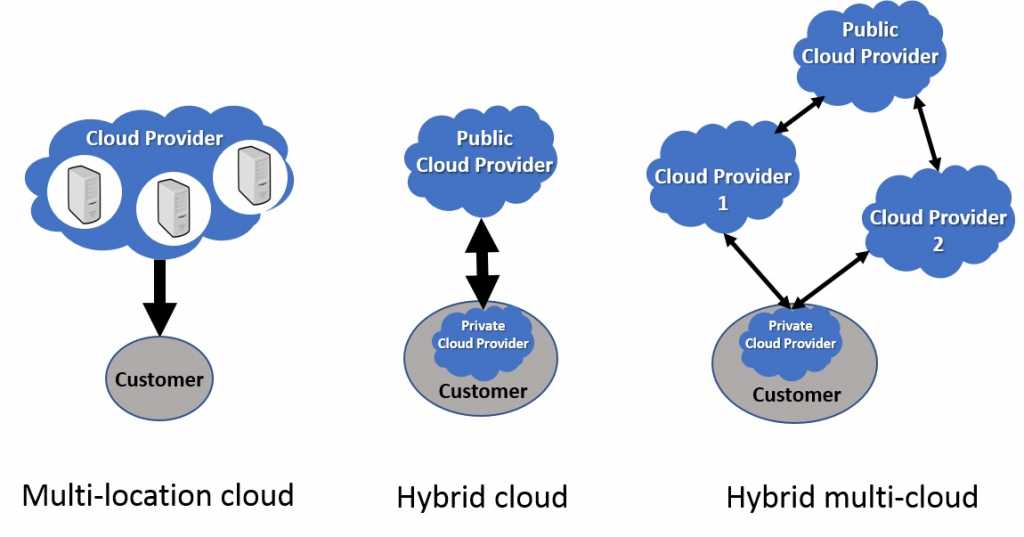Thirty-five years after George Orwell published his classic vision of our dystopian future, Nineteen Eighty-Four, science fiction writer Isaac Asimov offered some predictions for 2019. Asimov said that computerization would “make itself comfortable in the home,” a prediction that has certainly come true. He did not, however, include other technical advances that were just beginning to emerge, such as the Internet, or others – wireless smartphones or cloud computing, for example – that would have seemed like science fiction at the time.
While cloud computing has arguably come of age technically, enterprises are still in the early stages of deployment and integration of cloud-based systems. Various forecasts indicate that cloud is now the first choice for enterprise IT; it is also the only practical answer for hyperscale platforms such as Google Search. But cloud computing is no longer just outsourced computing or storage resources – it has become the foundation for innovation and transformation in the IT industry.
So, what’s the “weather” forecast for cloud computing in 2019? Will it be more of the same? Will hybrid and multi-cloud computing be the next wave of change (or are they just marketing buzzwords)? Will edge computing complicate life for the cloud providers? And, perhaps most importantly, will 2019 usher in new business opportunities for cloud adopters?
Cloud migration continues
Cloud migration will continue in 2019 as more workloads are moved either partially or completely to a cloud infrastructure. The Rightscale 2018 State of the Cloud Report, a survey of 997 technical professionals, found that 96 percent of the respondents use some form of cloud (92% public, 75% private). The study also determined that 81% of the respondents have a multi-cloud strategy.
The complexities and risks associated with cloud ‘multis’ – multi-service, multi-provider and multi-location – will become clearer, however, in the near term. A significant outage or security breach of a major cloud provider’s platform may lead to the reconsideration of some migration initiatives. To mitigate these risks, advanced technical training and hands-on experience will be a high priority for IT specialists in 2019.
Migration based on known patterns – “lifting and shifting” existing applications, replacing legacy applications with SaaS offerings, and cloud-native application (re-)development – will continue to represent cloud adoption best practices. The processes and keys to success for a cloud migration project are well-known and support is available from many sources including cloud providers (e.g., IBM, Amazon and Microsoft), major consulting firms (e.g., PWC, Accenture) and specialist partners.
Expanding the cloud model
Cloud computing is often marketed as a convenient way to access shareable IT resources using a pay-as-you-go “utility” paradigm. Cloud services make hyper-scale systems and global-scale applications easier to implement, thereby expanding the scope of enterprise systems. Very few enterprises can support millions of external users – or rapid growth in a user base – by relying on dedicated on-premises systems only.
Although the Rightscale 2018 report suggests that enterprises are prioritizing public over private clouds, new products such as AWS Outposts could change that trend. Enterprises may deploy hybrid clouds (using a private cloud connected to at least one public cloud) as a first step towards a fully-integrated hybrid multi-cloud model. Deploying container environments (such as Docker or Kubernetes) also improves interoperability, portability and orchestration across the different clouds. Kubernetes is an open source software product offered as a cloud service on all infrastructure: it facilitates easier movement of workloads among cloud infrastructures.
Figure 1.
 Currently, cloud systems as shown in Figure 1 are typically either customer-centric or provider-centric. In a customer-centric model, the cloud is an extension of enterprise IT – it’s just another component in the enterprise architecture. The enterprise is accountable for the overall solution, for integration of the resources, for managing the operation and for selecting the cloud services and providers. A provider-centric model is the opposite – it puts the cloud provider in charge of the solution and the on-premises enterprise systems are just users. Provider-centric clouds (such as Salesforce or Office 365) will continue to dominate the landscape and lead service delivery innovation.
Currently, cloud systems as shown in Figure 1 are typically either customer-centric or provider-centric. In a customer-centric model, the cloud is an extension of enterprise IT – it’s just another component in the enterprise architecture. The enterprise is accountable for the overall solution, for integration of the resources, for managing the operation and for selecting the cloud services and providers. A provider-centric model is the opposite – it puts the cloud provider in charge of the solution and the on-premises enterprise systems are just users. Provider-centric clouds (such as Salesforce or Office 365) will continue to dominate the landscape and lead service delivery innovation.
Clouds are spreading out
Cloud computing is often envisioned as a large data centre in the sky, with boundaries at the provider’s network access points. This external boundary will be pushed closer to the customer in 2019 to address the needs of managed private clouds, edge computing and the Internet of Things.
There are three typical cloud distribution patterns today, illustrated in Figure 2. In the first case, the cloud provider’s resources may be physically distributed even if they appear centralized. Secondly, a hybrid cloud splits applications and data between the public and private clouds. Thirdly, a multi-cloud model integrates services from multiple providers or sources. Hybrid- and multi-cloud computing are discussed in more depth in this article.
Figure 2.

Edge computing is an emerging architecture that pushes functions closer to (or sometimes at) the “edge” of a system – that is where the user/device boundary for humans, machines or sensors/actuators to interact with the system occurs. Benefits of edge computing include lower latency, reduced data transfer volumes, improved security and local device control. In 2019, edge nodes will still be treated as cloud service users but the transformation into distributed edge clouds will begin. For example, an enterprise user’s on-premises private cloud could serve as an edge node. Similarly, edge gateways with cloud-like functions may be deployed in factory systems. Edge computing is also the emerging model for many Internet of Things use cases, and many global providers, such as Microsoft and AWS, are now in the midst of leveraging private cloud offerings (Azure Stack and AWS Outposts) for edge cloud delivery to capture this opportunity.
Software is eating the cloud
Despite frequent references to the hardware resources, cloud computing is basically a set of software-defined services composed of applications, platforms, interfaces, virtualization, transport, security and management. Terms such as software-as-a-service, platform-as-a-service, microservices, infrastructure as code and function-as-a-service all relate to the software capabilities of cloud systems.
‘Cloud-native’ refers to software technologies that were ‘born in the cloud’ (built for cloud computing, as opposed to legacy technologies that were reconfigured or rebuilt) and includes microservice, container or serverless technologies. The Cloud Native Computing Foundation (CNCF) is a leader in this area – it develops software to run “scalable applications in modern, dynamic environments such as public, private, and hybrid clouds.” Kubernetes is a popular CNCF open-source project that automates deployment, scaling, and management of containerized applications across multiple hosts. The CNCF Cloud Native Landscape illustrates the wide range of projects that are being developed as open source software.
Docker remains the de facto standard for container-based platforms and tools for building, distributing and running containers. A recent survey by Diamenti (a US-based provider of bare-metal container platforms) found that while 47% of the 576 IT leaders surveyed were planning to deploy containers into production in 2018, only 12% have already done so. There is considerable room for expansion in the deployment of container technologies in 2019.
Throughout 2019 and beyond, automation and artificial intelligence will start to be incorporated into cloud operations, administration, management and provisioning systems, especially as cloud solutions become more complex and dynamic. Automation is essential for very large-scale systems – it is simply not feasible to use traditional, manual management methods for millions of users and high rates of dynamic change. Smart systems will manage change, provide advanced protection, react to events in near real time and learn from past incidents. Embotics is one example of the next generation of cloud management platforms.
Summary – items on the watch list
Watch going forward for increased use of clouds for basic business applications – systems of record such as payroll and personnel. Also, look for smart systems that depend on cloud services but also have more capabilities at or near the edge. Cloud computing is becoming a core component of the enterprise IT architecture.
Expect increasing adoption of hybrid and multi-cloud configurations with expanded interoperability and portability services. These will become the building blocks for edge computing, fog computing, the Internet of Things and the next generation of software-defined networks. Advanced users will also adopt vendor-neutral tools for managing and optimizing their complex cloud environments.
And watch for more innovations in cloud computing software and applications, including more “as a Service” capabilities. This could include advances in smart services for various industries as well as the introduction of Blockchain functions for self-sovereign identities, IoT security applications and device marketplaces.
2019 is poised to be a year to remember in the ongoing story of cloud computing.
Note: This article presents the opinions of the author and is not endorsed by InsightaaS or any cloud service provider.








